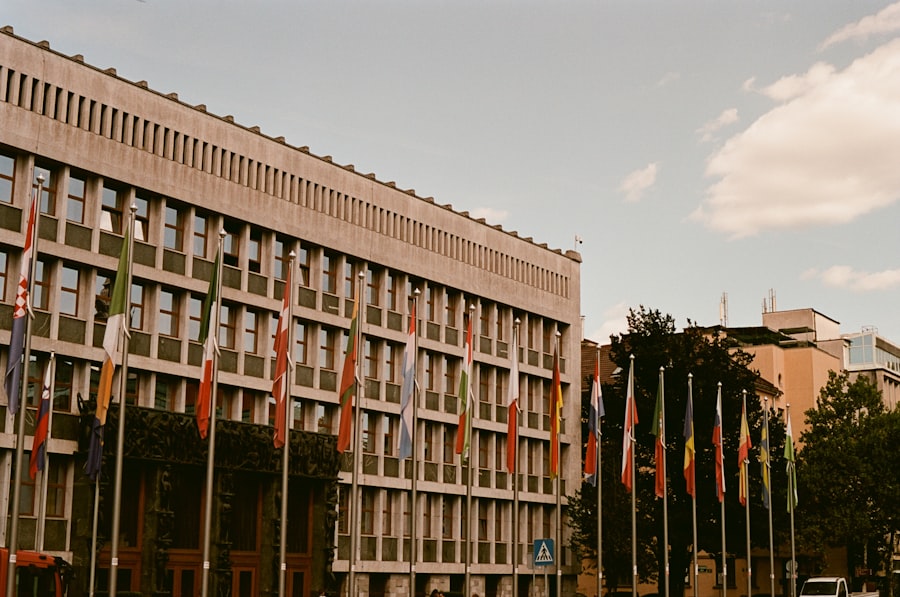The European Space Agency (ESA) stands as a beacon of scientific inquiry and technological advancement, dedicated to the exploration of the cosmos. Established in 1975, ESA’s mission encompasses a broad spectrum of activities aimed at understanding the universe, our solar system, and the Earth itself. The agency’s vision is not merely to observe celestial phenomena but to unravel the mysteries of space, contributing to humanity’s knowledge and fostering international cooperation in space exploration.
ESA’s commitment to scientific excellence is evident in its diverse range of missions, which include Earth observation, human spaceflight, planetary exploration, and astrophysics. ESA’s mission is driven by a desire to answer fundamental questions about our existence and the nature of the universe. This includes investigating the origins of life, understanding climate change through Earth observation, and exploring other planets for signs of past or present life.
The agency operates under the principle that space exploration is a collective endeavor that transcends national boundaries, encouraging collaboration among member states and beyond. By pooling resources and expertise, ESA aims to push the frontiers of knowledge while inspiring future generations to engage with science and technology.
Key Takeaways
- The European Space Agency (ESA) is dedicated to exploring the universe through space missions and technology development.
- ESA plays a crucial role in space exploration by conducting scientific research, developing advanced technology, and collaborating with international partners.
- ESA’s current and future missions include studying the Earth, exploring Mars, and conducting deep space exploration.
- The technology behind ESA’s space missions includes advanced spacecraft, robotic rovers, and cutting-edge scientific instruments.
- ESA has made significant discoveries and contributions to space exploration, including the discovery of water on Mars and the development of the Hubble Space Telescope.
ESA’s Role in Space Exploration
ESA plays a pivotal role in the global landscape of space exploration, acting as a key player alongside other major space agencies such as NASA, Roscosmos, and CNSWith its unique position in Europe, ESA serves as a platform for member states to collaborate on ambitious projects that would be challenging for individual nations to undertake alone. The agency’s governance structure allows for shared funding and resources, enabling it to tackle complex scientific questions and technological challenges that require a concerted effort. One of ESA’s significant contributions to space exploration is its focus on Earth observation.
Through missions like Copernicus, ESA provides critical data that informs climate science, disaster management, and urban planning. This commitment to understanding our planet not only enhances scientific knowledge but also supports sustainable development initiatives across Europe and beyond. Furthermore, ESA’s involvement in human spaceflight through the International Space Station (ISS) exemplifies its role in fostering international collaboration, as astronauts from various countries work together in a microgravity environment to conduct groundbreaking research.
ESA’s Current and Future Missions

ESA is currently engaged in a multitude of missions that span various domains of space exploration. One notable mission is the Mars Express spacecraft, which has been orbiting Mars since 2003. This mission has provided invaluable data about the Martian atmosphere, surface, and potential for past life.
Additionally, ESA’s ExoMars program aims to send a rover to the Martian surface to search for signs of life and collect samples for future return to Earth. These missions underscore ESA’s commitment to planetary exploration and its quest to answer profound questions about our neighboring worlds. Looking ahead, ESA has ambitious plans for future missions that promise to expand our understanding of the universe.
The Jupiter Icy Moons Explorer (JUICE) mission is set to launch in 2023, with the goal of studying Jupiter’s moons Europa, Ganymede, and Callisto. These moons are believed to harbor subsurface oceans that could potentially support life. Another exciting initiative is the Ariel mission, which aims to study exoplanets and their atmospheres in detail.
By analyzing the chemical composition of these distant worlds, ESA hopes to gain insights into their formation and the potential for habitability.
The Technology Behind ESA’s Space Missions
| Technology | Description |
|---|---|
| Propulsion Systems | Advanced propulsion systems such as electric propulsion and chemical propulsion are used to maneuver spacecraft in space. |
| Communication Systems | Highly efficient communication systems enable data transmission between spacecraft and ground control. |
| Navigation Systems | Precise navigation systems including star trackers and gyroscopes are utilized for accurate positioning and orientation. |
| Scientific Instruments | State-of-the-art scientific instruments are employed to conduct experiments and gather data about celestial bodies. |
| Materials and Structures | Advanced materials and robust structures are designed to withstand the harsh conditions of space. |
The success of ESA’s missions is underpinned by cutting-edge technology that enables spacecraft to operate in the harsh environment of space. One of the key components of this technology is propulsion systems, which are essential for maneuvering spacecraft during their journeys. ESA has developed advanced propulsion technologies such as electric propulsion systems that offer greater efficiency compared to traditional chemical rockets.
These systems allow spacecraft to travel longer distances with less fuel, making them ideal for deep-space missions. In addition to propulsion technology, ESA invests heavily in developing robust communication systems that ensure data transmission between spacecraft and ground control. The agency employs sophisticated antennas and relay satellites to maintain constant communication with its missions, allowing scientists to receive real-time data from distant locations.
Furthermore, ESA’s commitment to miniaturization has led to the development of small satellites known as CubeSats, which can be deployed for various scientific purposes at a fraction of the cost of traditional satellites. This innovation opens new avenues for research and exploration while making space more accessible.
Discoveries and Contributions Made by ESA
ESA has made significant contributions to our understanding of the universe through its various missions and research initiatives. One of its most celebrated achievements is the Hubble Space Telescope collaboration with NASA, which has revolutionized our understanding of cosmic phenomena. Hubble has captured breathtaking images of distant galaxies, nebulae, and other celestial objects, providing insights into the formation and evolution of the universe.
The data collected by Hubble has led to groundbreaking discoveries, including the acceleration of the universe’s expansion and the existence of dark energy. In addition to astronomical discoveries, ESA’s Earth observation missions have had a profound impact on environmental science. The Sentinel satellites under the Copernicus program monitor changes in land use, deforestation, and climate patterns across Europe and beyond.
This data is crucial for policymakers and researchers working on climate change mitigation strategies. Moreover, ESA’s Rosetta mission successfully landed a probe on a comet for the first time in history, providing unprecedented insights into the composition of comets and their role in the solar system’s formation.
International Collaborations and Partnerships

International collaboration is at the heart of ESA’s approach to space exploration. The agency works closely with various global partners, including NASA, Roscosmos, JAXA (Japan Aerospace Exploration Agency), and others, to share knowledge, resources, and expertise. These partnerships enhance the capabilities of each agency and enable them to undertake more ambitious projects than they could achieve independently.
One notable example of international collaboration is the International Space Station (ISS), where ESA plays a vital role alongside other space agencies. European astronauts conduct experiments aboard the ISS that contribute to our understanding of human health in microgravity and advance technologies for future long-duration space missions. Additionally, ESA collaborates with international organizations such as the United Nations Office for Outer Space Affairs (UNOOSA) to promote peaceful uses of outer space and ensure that all nations can benefit from space exploration.
The Future of Space Exploration: ESA’s Vision
As we look toward the future of space exploration, ESA envisions a landscape where humanity continues to push the boundaries of knowledge while ensuring sustainable practices in space activities. The agency recognizes that addressing global challenges such as climate change requires innovative solutions that leverage space technology. ESA aims to enhance its Earth observation capabilities further while exploring new frontiers beyond our planet.
One aspect of ESA’s vision involves increasing its focus on human exploration beyond low Earth orbit. With plans for lunar missions under its Artemis program collaboration with NASA, ESA seeks to contribute technology and expertise for sustainable lunar exploration. This includes developing lunar landers and habitats that will support astronauts on the Moon while paving the way for future missions to Mars.
By establishing a presence on the Moon, ESA aims to create a stepping stone for deeper exploration into our solar system.
How to Get Involved with ESA’s Mission
For those interested in becoming part of ESA’s mission or supporting its endeavors in space exploration, there are numerous avenues available. Educational programs play a crucial role in inspiring young minds to pursue careers in science, technology, engineering, and mathematics (STEM). ESA offers various educational resources and initiatives aimed at schools and universities across Europe, encouraging students to engage with space science through hands-on projects and competitions.
Additionally, ESA provides opportunities for individuals to participate in citizen science projects where they can contribute data analysis or engage with ongoing research initiatives. Public outreach events such as exhibitions, lectures, and workshops allow enthusiasts to learn more about ESA’s missions while fostering a sense of community among those passionate about space exploration. By participating in these activities or pursuing careers within ESA or its partner organizations, individuals can play an active role in shaping the future of humanity’s journey into space.


